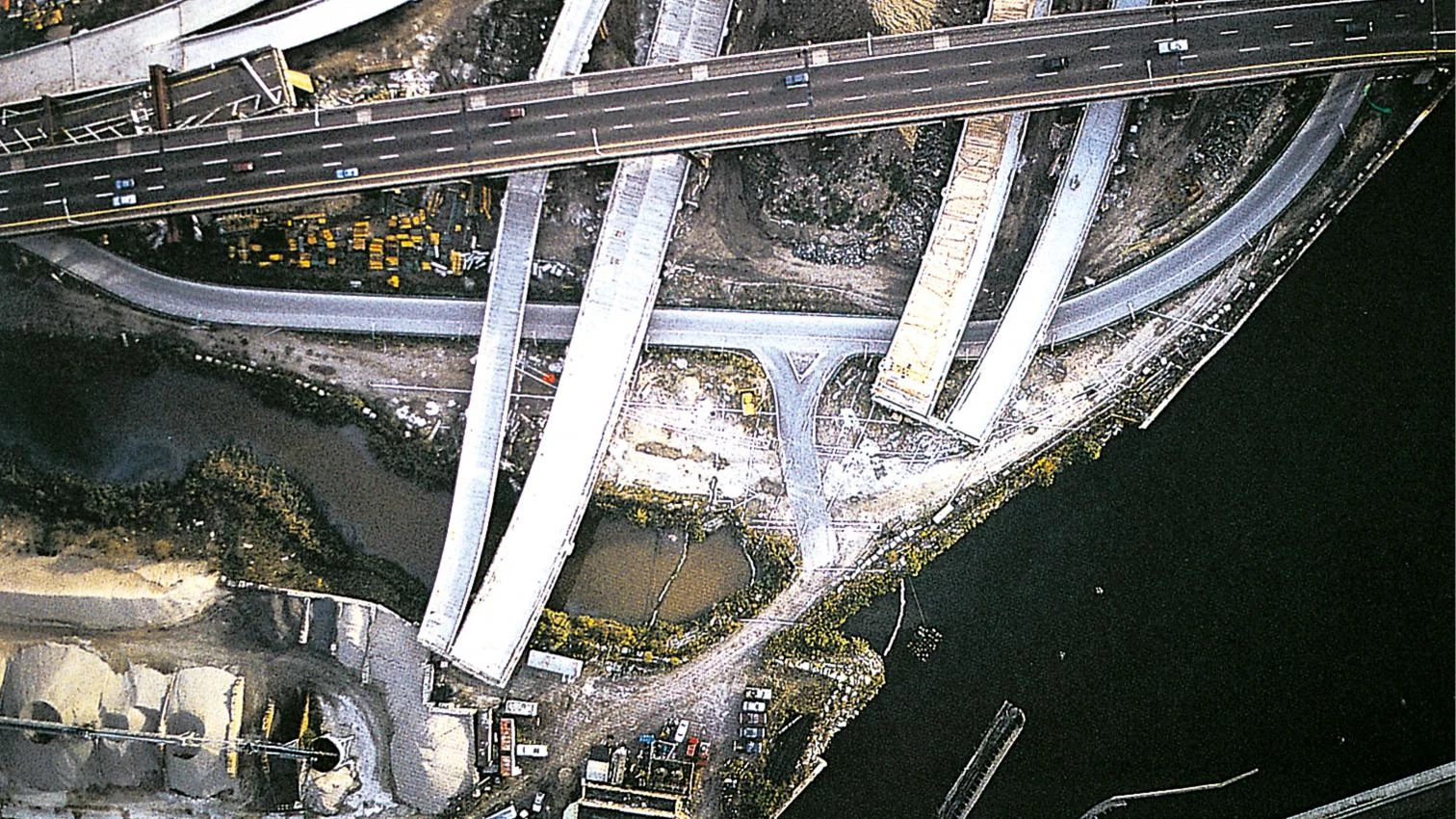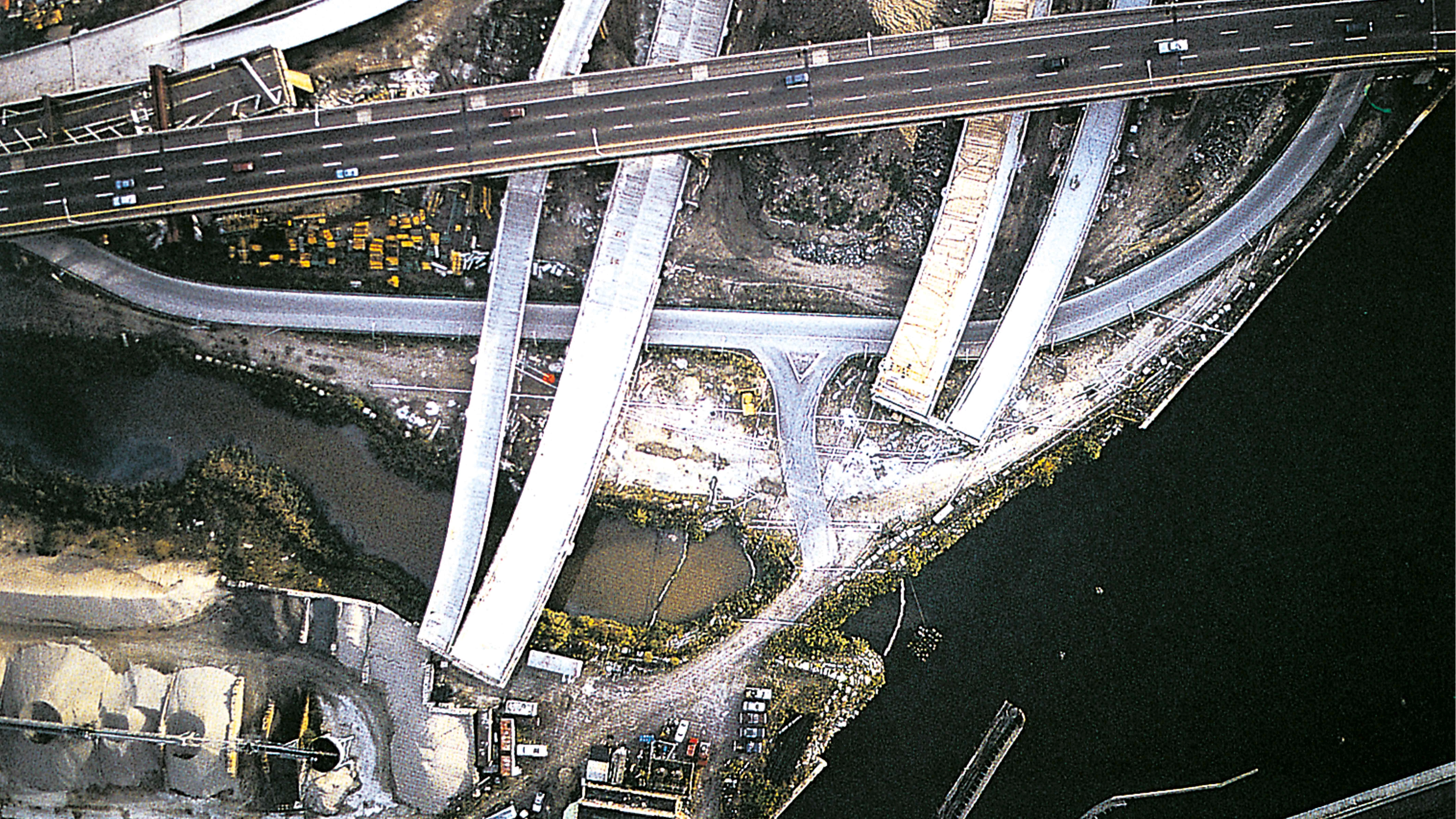
New highway ramps with construction markings, Charlestown, Massachusetts
The romance between modern architecture and the automobile was just an adventure among youngsters born around the same years, and who claimed to have the future in their hands. But the conquest of the world by the combustion engine radically transformed the structure of the city and the geometry of the territory. In contrast with the demanding rigidity of railroad tracks, the endless ductility of asphalt took up the landscape as a tongue of lava, and when the large highways extended their fast tentacles over the cracked fabric of the existing city, they brought with them a new pattern of movement and a new economic structure, called to equally transform the physical and the social space. Vast parking areas show the hypertrophy of order – ironically summarized in the artistic installation – demanded by the system at rest; while halted movement exemplifies the difficult coexistence of vehicles and the haphazard flows of pedestrian traffic. The conceptual image of the accident embodies a metaphor of crisis, made explicit by the two adjacent photographs: the tar ribbon of California, main street of a winter nomadic city that owes its existence to oil; and the sandy road of Baghdad, main avenue of a ghostly town of vehicles devastated by an oil war...[+]






